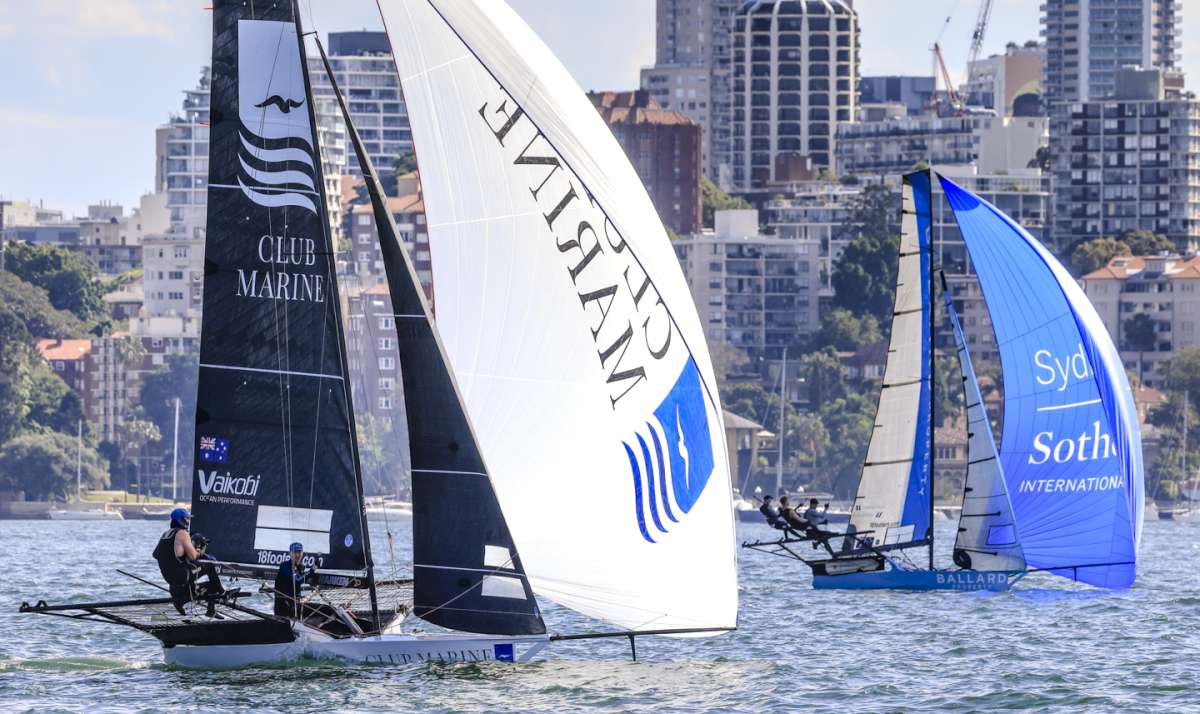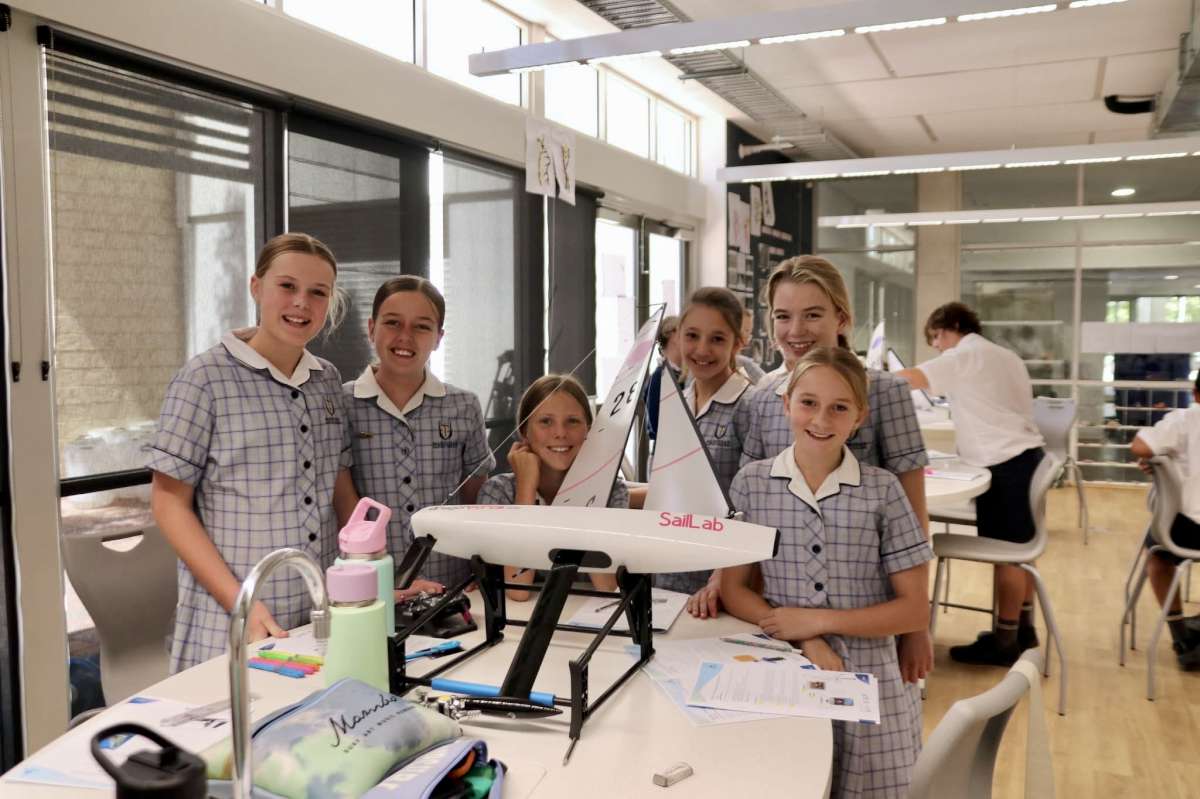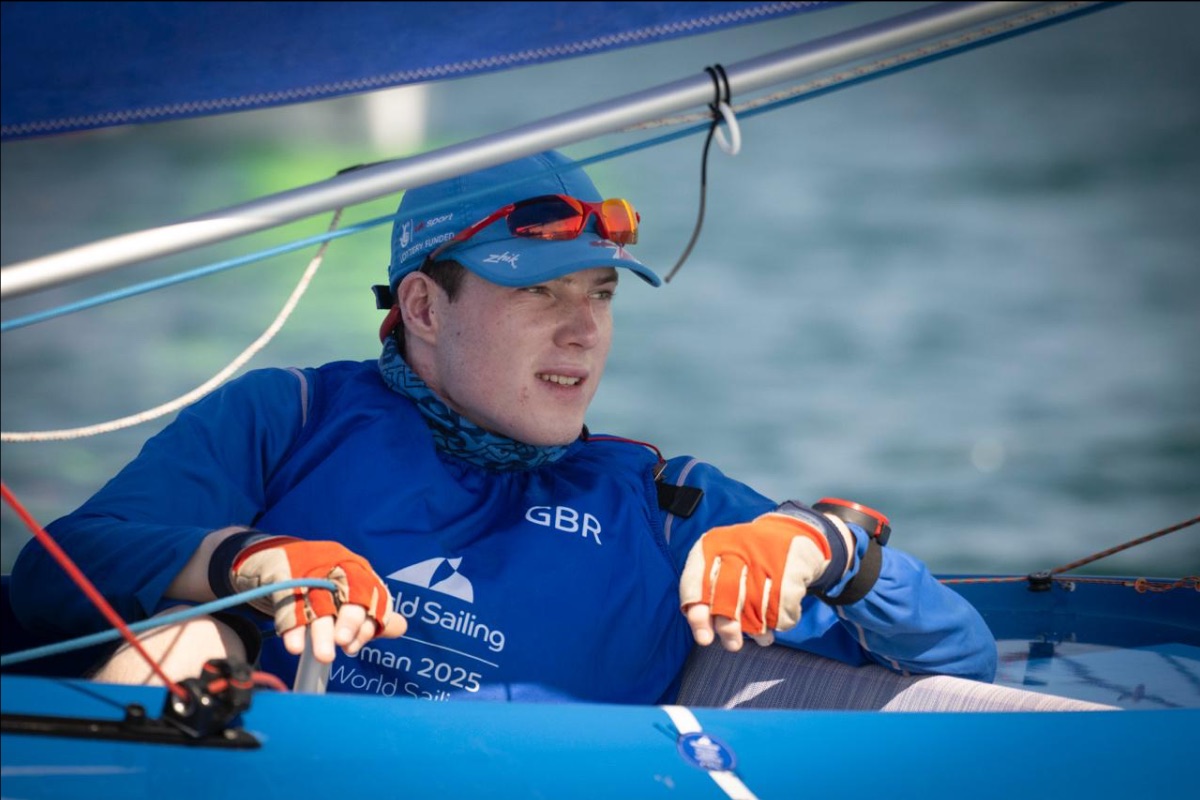With thousands of ocean and coastal miles under their keels Dave and Pattie Bowden and Geoff and Cherylle Stone, two couples who own Grainger catamarans, share their thoughts on coping with heavy weather. Article compiled by Cherylle.
Keeping This Way Up
Dave and Pattie Bowden
Rough weather, big seas and storms? Count us out! We will go to great lengths to avoid these situations. How do we plan to avoid bad weather? Simple – do not be out there when these conditions occur.
We have been cruising and living aboard our Grainger 430 catamaran, This Way Up, for eight years. In that time we have circumnavigated Australia, cruised to and spent many months in the Louisiades, Tasmania, New Caledonia and Vanuatu, rounded Cape York five times (three west-bound and two east-bound) and sailed to Thailand, where we are at present. Being Port Stephens-based, we have made regular passages up and down the NSW and Qld coasts. In that time the strongest winds we have encountered were 43 knots as we changed anchorage in Tasmania to get better protection. We were only exposed for about three hours and mostly with the wind coming offshore so the seas were small.
We apply four sailing principles. First, whatever we do it must be safe, ie not foolhardy or silly. Second, we will try to make the cruise enjoyable and comfortable by selecting the best weather window, time of day, sailing configuration and angle to the wind and waves. Thirdly, we will travel and go places because you can be perfectly safe and comfortable staying in a marina but that is not cruising. Lastly, we will not sail in such a way that equipment is likely to break because of excessive strain, chafe or bad ship handling. The last principle, for example, caused us, once, to “granny” the yacht around rather than gybe in very strong winds.
We (and those who share the trip) plan our journeys so that we are not driven by deadlines. Having the luxury to wait just one day for a better weather window can make an enormous difference.
On passages we will change heading to avoid wind/wave conditions that are uncomfortable, slow or likely to create spray. A slight heading change can avoid side-on waves slapping the hulls and throwing up water or increase speed by a knot or two (multihulls and apparent wind at work here).
Right season
We sail in the right season for the direction of travel and best weather conditions we can find. We spend a lot of time talking to cruisers who have been there before, researching the conditions through magazine and web articles and examining the history of weather patterns in the area, including daily wind cycles. We like travelling with a couple of other yachts because we find everyone contributes some useful view or experience. On passage, we encourage radio skeds to exchange information on weather (actual and forecast) and provide mutual support to one another in time of need. The decision when and how to sail is entirely the prerogative of each yacht but information obtained in the planning and execution phases is shared, discussed and compared. In any case it is a lot of fun sharing the experience and making new friends as you travel, and post-voyage discussions at happy hour are highly animated.
Equipment
The first pieces of equipment we acquired for This Way Up were a Para-anchor (a particular brand of parachute anchor) and drogue. The Para-anchor deployment procedures have been tested and it is ready to go, including handy access, anti-chafe material, lock wire on shackles etc. We secure it by wide padded strops round the cross beam at the hull joint to avoid using cleats that might break under extreme loads. We are glad to say that neither the Para-anchor nor the drogue has been used in actual heavy weather. To make up for our lack of experience we did borrow a book that catalogued and discussed hundreds of examples of successful and not so successful deployments of Para-anchors and drogues.
This Way Up has good bridgedeck clearance, and if we keep loads and speed under control (ie down), upwind sailing is fine. As soon as we get consistent bridgedeck slap or buckets of water/spray on deck from jumping into waves, it is a warning to slow down. Invariably if this occurs it is because we have not reefed enough, so we aim to reef early and deep. Close-hauled strong-wind conditions generally require us to hand steer to hold that fine line between stalling and accelerating above six knots. At six knots we have found that our yacht will have time to rise to the oncoming wave without spearing it and creating slap and spray. We much prefer downwind sailing and have found that even a strong wind warning is okay if the day's sailing is all downwind – such as heading north from Cairns in southeast trade conditions.
We choose to sail areas in their settled season. Because we download GRIB files, weather fax and listen to regular broadcasts, we are pretty confident we would have warning of conditions other than local storms. If we know conditions will be consistently above 20-25 knots we will change from genoa to our smaller jib. In the case of storms of limited duration (ie hours not days) we fully reef and, if it's still too strong, we furl all sails and use motors alone, as we did during a very active Queensland storm off Shoalwater Bay. If this tactic is not adequate – and we had sea room – we would run off under bare poles using the drogue. If conditions continued to deteriorate we would deploy the Para-anchor. We would not expect to recover it until wind and waves moderate so best have a cuppa and read a good book. Patience is the key here.
Surviving on Subzero
Geoff and Cherylle Stone
Some monohull cruisers believe that multihulls are not to be trusted in anything but sheltered harbours. This misapprehension is fuelled by regular reports of racing multihull capsizes and memories of poorly designed and constructed vessels that plied the ocean waves in the 60s and 70s. The multihull critics invariably fail to notice that the frequency of reported incidents involving racing monohulls matches the stats for racing multihulls.
In our experience, if they are sailed competently, modern cruising multihulls are as safe as cruising monohulls. Preparation of the boat, crew experience and sailing conservatively in favourable weather windows are more important to vessel safety than the number of hulls.
During the past five years we have sailed Subzero, our 13m Grainger catamaran, 10,000 coastal miles between Sydney and Broome and another 6,000 ocean miles to New Caledonia, Vanuatu and Papua New Guinea. Careful planning and a little bit of luck have enabled us to avoid sailing in gale-force conditions. The longest period of strong winds outside the protection of reefs was a 12-hour stretch as we approached the Louisiades with average wind speeds of 30 knots on the beam. We pulled the main down and sailed comfortably with just the jib.
Safe passage-making
Safe ocean passage-making in adverse conditions hinges on competent, healthy, well rested crew and waterproof clothing. Irrespective of the conditions, we keep to the agreed watch system, reducing sail before dark and, if possible, reefing the mainsail at change of watch, eat regularly and stay dry. Seasickness has not been a problem so far because we take chemicals, eg seasickness tablets, if there is any inkling of illness. The small discomforts of a dry mouth and some drowsiness are nothing compared to the alternative. However, if a crew member should succumb, there is a supply of Stemetil suppositories in the first aid kit.
As with bluewater sailing, comfortable coastal cruising in a multihull depends on waiting for the right weather. While we are happy to sail downwind in strong winds, we avoid sailing to windward when the wind gets above 25 knots. If there is a gale in the offing, we try to find somewhere sheltered with good holding. In 2008, with a gale forecast for the Whitsundays, we retreated to Gulnare Inlet. It was not a good choice. The wind shifted from southeast to southwest and a 42-knot gust at 2am shot us back towards the mangroves. We retrieved the ground tackle and re-anchored safely, albeit with some shouting from the dark, wet, windy foredeck. Our 27kg galvanised plough anchor on 60m of 10mm stainless chain had always held before. However, in extreme conditions with a depth of only three metres, Gulnare is too shallow for good catenary action, there is some grass on the muddy bottom and a southwesterly blows straight in.
Heavy weather helpers
A parachute-anchor, drogue and storm jib are essential equipment for any bluewater multihull.
Although Subzero's Para-anchor is always ready to go when we are on ocean passage, we have never used it. Recently, we sailed offshore for a practice. (see P30 for step-by-step pics) The anchor is just over three metres in diameter and attached to a 30m bridle of 14mm three-strand nylon and 100m of 16mm three-strand nylon rode. There is a 33m retrieval line on the bridle. A 15m trip line of 12mm silver rope is attached to a fender and a further 25m of 12mm silver rope ends at an orange float. All shackles and knots are seized with cord, which is easier on the hands than wire.
The bridle is secured to the outer ends of the forebeam, with plastic hose used as an anti-chafe measure, and led so as to deploy without fouling the prodder lines.
The rode and bridle are flaked and tied on the foredeck with the end of the rode led aft along the port side outside the lifelines and back to the cockpit attached with cable ties at the bases of the stanchions. When it's time to deploy the Para-anchor, one person goes forward and unties the ropes holding the flaked bridle and rode and then moves aft to attach and deploy the parachute on the windward side.
On the practice day there was a 10-knot northeasterly and a half-metre sea. The engines were used to give enough drag to deploy the Para-anchor. While the rode went out without incident, the two bridle ropes and retrieval line tangled in two places. In future we will flake these lines separately, not as one coil.
It is essential that the rode and bridle feed out automatically because human intervention in this process can lead to severe injury if a rope tangles around hands or feet.
To retrieve the Para-anchor, the bridle retrieval line is brought in using the anchor winch, and the bridle taken in to resist it fouling the propellers or rudders. We then motor up to retrieve the orange float. As this line is pulled in the Para-anchor collapses and can easily be retrieved over the forebeam.
There was a mess on the foredeck after we retrieved the equipment but by this time the conditions should have calmed enough to stow the gear in the forward lockers.
We now feel confident that if our preparation and weather forecasting fail to keep us off the water during a gale – and we have the sea room – the Para-anchor will be a fine last resort.

























